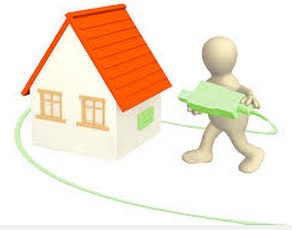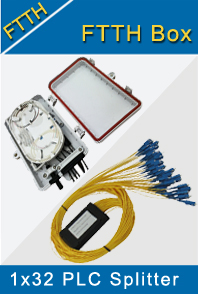-

- Sopto Home
-

- Special Topic
-

- FTTH Knowledge
-

- Depth Analysis of Fiber Optic Testers Part 2
FTTH Knowledge
- Solving the FTTH Rollout Problem in Multiple Dwelling Units
- WDM PON Introduction FAQ
- A Simple Overview of Optical Power Meter
- ODN is based on PON FTTH Optical Cable Network of the Device
- Using an OTDR to be an Expert in Fiber Link Testing
- How FTTH Broadband Works?
- Connections among Fiber Terminal Boxes & Patch Cables & Pigtails
- Easy to Install a Fiber Terminal Box
- What is Arrayed Waveguide Grating?
SOPTO Special Topic
Certificate



Guarantee
Except products belongs to Bargain Shop section, all products are warranted by SOPTO only to purchasers for resale or for use in business or original equipment manufacturer, against defects in workmanship or materials under normal use (consumables, normal tear and wear excluded) for one year after date of purchase from SOPTO, unless otherwise stated...
Return Policies
Defective products will be accepted for exchange, at our discretion, within 14 days from receipt. Buyer might be requested to return the defective products to SOPTO for verification or authorized service location, as SOPTO designated, shipping costs prepaid. .....
Applications

Sopto supply the best FTTH solutions for your network!
SOPTO Products
- Fiber Optic Transceiver Module
- High Speed Cable
- Fiber Optical Cable
- Fiber Optical Patch Cords
- Splitter CWDM DWDM
- PON Solution
- FTTH Box ODF Closure
- PCI-E Network Card
- Network Cables
- Fiber Optical Adapter
- Fiber Optical Attenuator
- Fiber Media Converter
- PDH Multiplexers
- Protocol Converter
- Digital Video Multiplexer
- Fiber Optical Tools
- Compatible
Related Products
Performance Feature
FTTH Knowledge
Recommended

Depth Analysis of Fiber Optic Testers Part 2
Optical power meters are used to measure the absolute optical power or the relative length of optical fiber optical power loss. Measuring optical power is the most basic in the fiber-optic system. Very much like the electronics multimeter, in optical fiber measurement Optical Power Meter is a heavy-duty commonly used table, and it is suggested that each of the fiber optic technicians should staff one. Through the measurement of the absolute power of the transmitting end optical network, a power meter can be able to evaluate the performance of the light end equipment. With an optical power meter and stabilized optical light source used in combination, it is possible to measure the connection loss, test continuity and help evaluate the transmission quality of fiber link.
For any manufacturing of optical fiber transmission system, installation, operation and maintenance, optical power measurement is essential. In the field of optical fiber, if there are no optical power meters, any engineering, laboratory, manufacturing floor or telephone maintenance facilities are unable to work. For example, Optical Power Meter can be used for measuring the output power of the laser light source and the LED light source; used to confirm the estimate of the loss of the optical fiber link; most important of which is that it is a test optical components (fiber, connectors, connecting sub, attenuator key performance indicators, etc.) instrument.

Specific applications for users to select the appropriate optical power meter should pay attention to the following points:
1.Select the optimal probe type and interface type.
2. The evaluation calibration accuracy and manufacturing calibration procedures, and the required range of optical fiber and connector match.
3. Determine if the model is consistent with the measurement range and display resolution.
4. With the direct dB insertion loss measurement function.
Optical light source are used transmitting the light with known power and wavelength to optical system. As mentioned, a stabilized light source together with an optical power meter, can measure the optical loss of the optical fiber system. In off-the-shelf optical fiber system, usually the transmitting end of the system machine plays a role as a stable light source. If the end of the machine does not work or does not end machine, you need to separate stable light source.
The stability of the wavelength of the light source should be as consistent as possible with the wavelength of the system end machine. After installation of the system, often need to measure the end-to-end loss, in order to determine whether the connection loss to meet the design requirements, such as: measuring connectors, splices point loss, and optical fiber body loss.
Optical light source transmit the light with known power and wavelength to enter the optical system in the process of measuring loss. Optical power meter which is used calibrating a specific wavelength light source will receive light from the optical fiber network and convert it into electrical signals. To ensure the accuracy of loss measurement, the transmission equipment that used in the fiber optic light source simulation should have these features.
1. The same wavelength, and uses, the same type of light (LED, laser).
2. During the measurement, ensure the stability of the output power and spectral (time and temperature stability).
3. To provide the same connection interface, and use the same type of fiber.
4. The size of the output power should meet the worst-case system loss measurements.
When the transmission systems require a separate stable light source, the optimal choice of light source should simulate the characteristics of the system Optical and measurement needs. When you select light source, it should be considered to the following aspects: a laser tube (LD) from the LD light emitted from a narrow wavelength bandwidth, almost monochromatic, i.e. a single wavelength.
Compared with the LED, through its spectral band (less than 5nm) the laser is not continuous, and on both sides of the center wavelength, but also the emission the several lower peak explants wavelength. Compared to the LED light source, laser source provides more power, but its price is higher than the LED. Laser tube is commonly used in the loss of more than 10dB of long-haul single-mode system. You should avoid measuring multimode fiber with laser light source.
For purchasing high quality fiber optical products with low cost or for more products’ information, please contact a Sopto representative by calling 86-755-36946668, or by sending an email to info@sopto.com.



